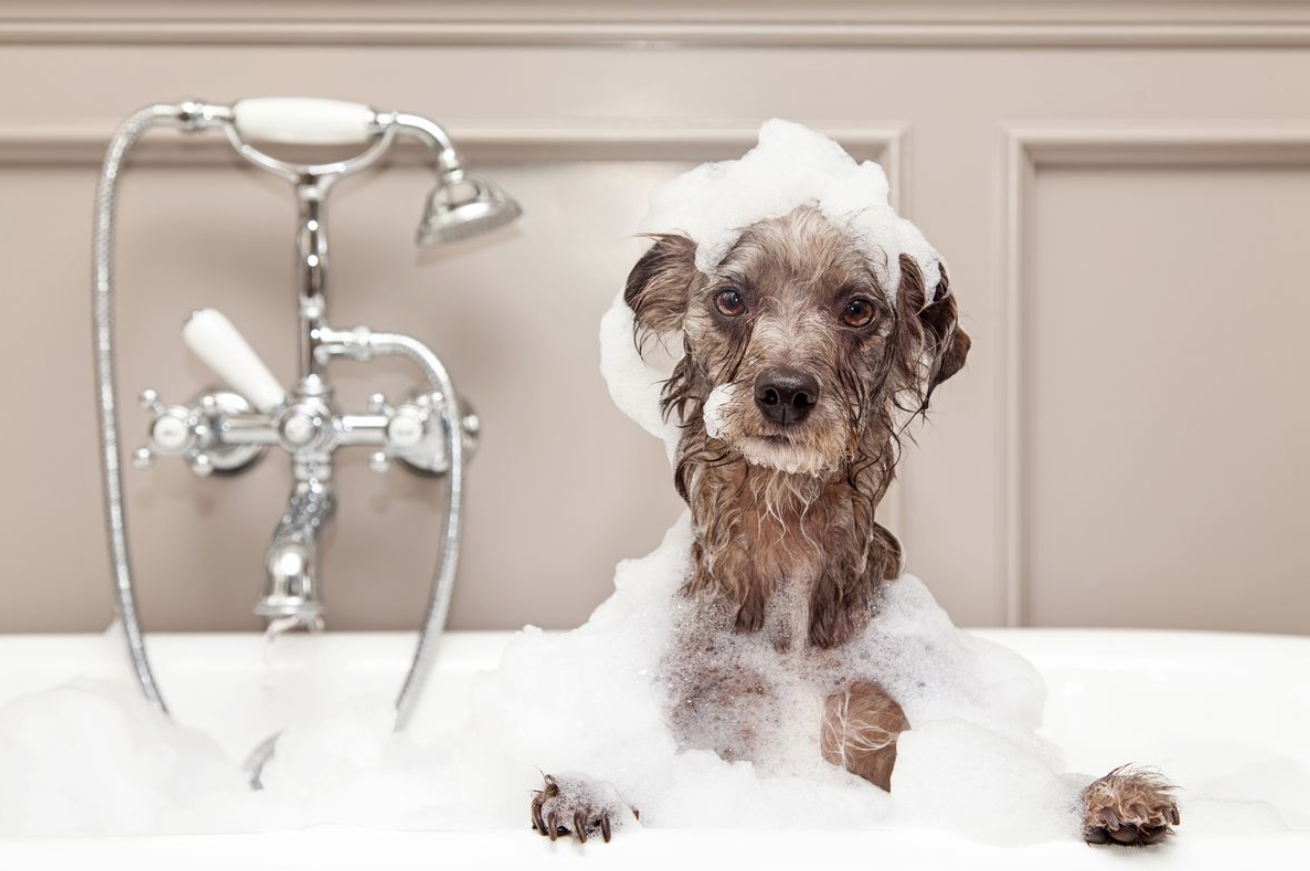Giving your dog regular baths is an essential part of ongoing grooming and good hygiene. Of course, baths help remove visible dirt your dog earned through happy walks and romps through natural environments. But in addition to keeping your dog’s coat clean, bathing also helps keep it healthy and free from parasites. While bathing is important for all dogs, not all require bathing at the same frequency — with factors like their breed, fur, and environment all affecting the appropriate interval between baths. Once you determine how many scrub downs your pet needs, make those baths as pleasant and stress free as possible using these expert tips for how to bathe a dog, backed by a veterinarian.
How to prepare to bathe your dog:
Before you even turn on the water, take the time to set up an environment where your dog will be as comfortable as possible, and will associate the experience positively. One way to do that is to prepare your dog’s coat so the process doesn’t trigger discomfort.
“It’s recommended that you take the time to brush your dog’s coat, especially if they’re longer-haired pups that get frequent tangles,” says Jennifer Freeman, PetSmart resident veterinarian and pet care expert. “Tangled hair can mat once you start bathing your dog, making it an unpleasant experience for your pet.”
Where to bathe your dog:
First, you’re going to need to determine the right place to bathe your dog. As a starting point, “Consider the size and breed of your dog to ensure you have space and to best determine whether to bathe your dog indoors or outside,” Freeman says.
For particularly small dogs, a sink might work best. More likely, it’s a bath tub, which can accommodate a range of breed sizes.
Bathing your dog outside instead of indoors might be a solid choice for certain breeds in some seasons.
Ideal water conditions for bathing a dog:
Especially if you’re bathing your dog outside — where hoses might run cold or hot — be mindful of water temperature and pressure.
Where to bathe your dog:
First, you’re going to need to determine the right place to bathe your dog. As a starting point, “Consider the size and breed of your dog to ensure you have space and to best determine whether to bathe your dog indoors or outside,” Freeman says.
For particularly small dogs, a sink might work best. More likely, it’s a bath tub, which can accommodate a range of breed sizes.
Bathing your dog outside instead of indoors might be a solid choice for certain breeds in some seasons.
Ideal water conditions for bathing a dog:
Especially if you’re bathing your dog outside — where hoses might run cold or hot — be mindful of water temperature and pressure.

Drying your dog after the bath:
No matter where you bathe your dog, don’t forget drying — an essential part of the bathing process to keep your pup comfortable and healthy.
“Regardless of where you bathe your dog — indoors or out — it’s important to dry him with a towel,” Freeman says. “Dogs with heavier coats should be dried thoroughly to prevent damp spots in the undercoat which can lead to hot spots.” This is a common dog skin disorder also known as acute moist dermatitis; it causes sores and pain.
Safety tips for bathing a dog:
Whether your dog regularly enjoys baths or is always skittish about the whole prospect, you’re going to want to line up some safety measures to keep bath time safe and secure.
“Unless your dog can sit still during a bath or you’re able to restrain them with your hand, it’s important to make sure you have somewhere to tether them if need be to avoid them escaping mid-bath,” Freeman notes. “Never leave your dog unattended.”
She also warns pet bathers to make sure to thoroughly wash off any leftover shampoo. “Not doing so can lead to contact dermatitis or hot spots, moist and infected lesions that itch,” Freeman says.
With these tips in mind, you’ll be ready for a safe, successful, and stress-free dog-bathing process.
